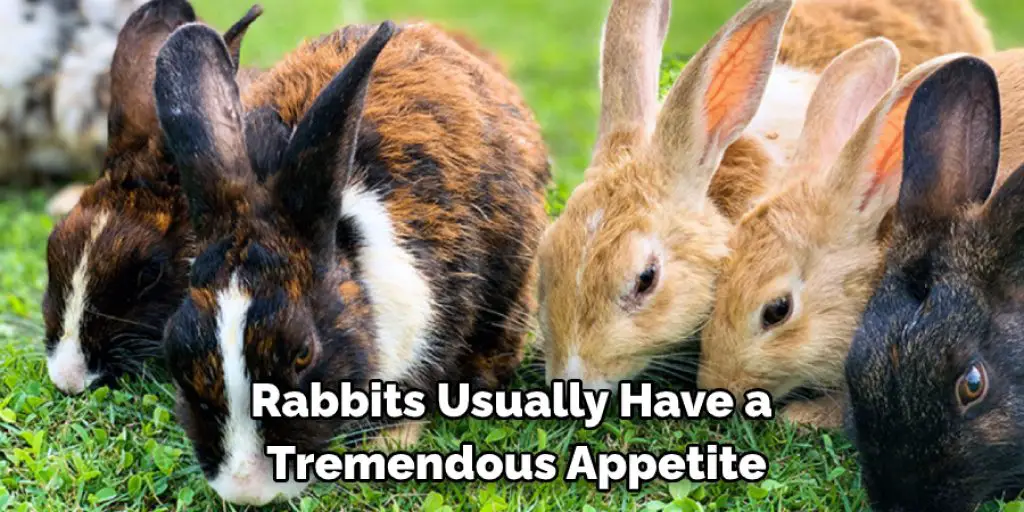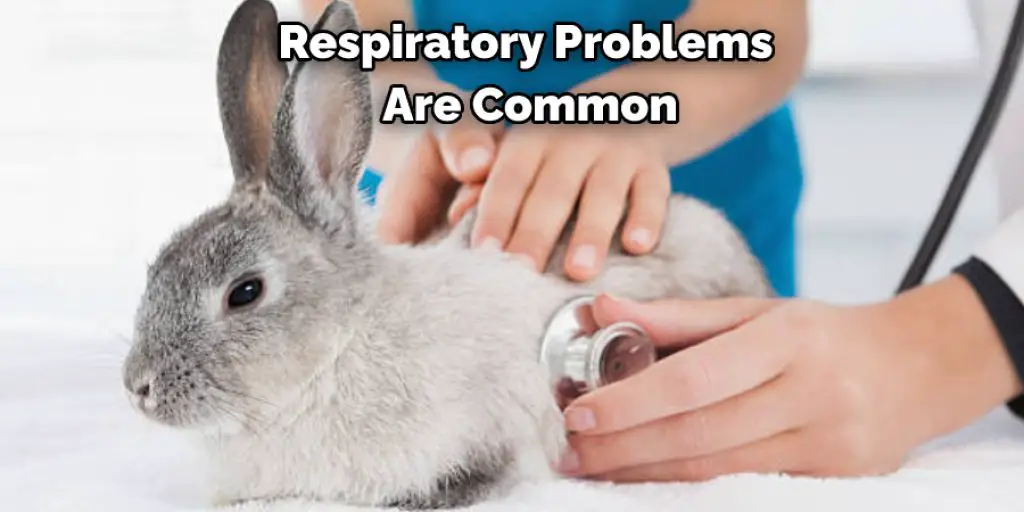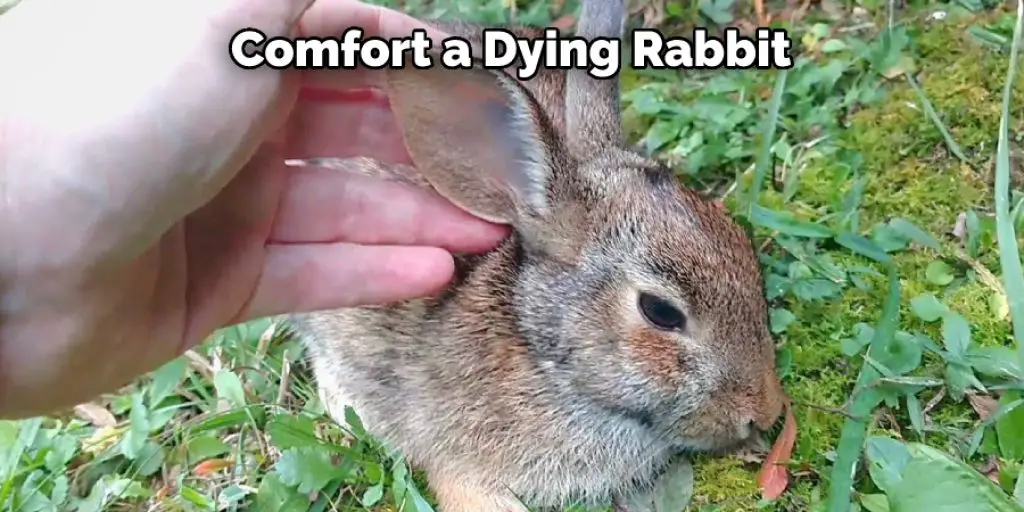Like me, you have a deep love for all animals. This probably includes rabbits, which can be incredibly sweet and loving creatures – even when they’re dying. So if you’ve recently lost a rabbit or are tending to one who is close to death, here are some tips on how to provide comfort in their last moments. This article will discuss how to comfort a dying rabbit. Read on for more.

Rabbits are prey animals, which means they are susceptible to emotional stress. Therefore, handling their death will significantly influence how peaceful their passing is. If your rabbit doesn’t die in a few days, consider having an experienced person euthanize them when it’s time. This way, they won’t have to suffer any longer than necessary.
Contents
Signs That a Rabbit Would Die:
1. Howling and Growling:
When a rabbit suffers from severe pain or injury, it will moan and groan. Howls and growls may be heard from them as they try to cope with the pain. They would whine to express their discomfort, or sometimes they do it because of boredom. Howling is sometimes accompanied by teeth grinding. This behavior may be left unnoticed, especially when no one is home, but if you checked on your rabbit and it’s still howling, something is wrong.
2. Loss of Appetite or Refusal to Eat:
Rabbits usually have a tremendous appetite; they jump for joy when they see their owners bearing greens in their hands. Pet owners can easily observe this because rabbits are consistently the most fabulous house guests who always have something to say about what’s being served for dinner.
But once a rabbit refuses to eat, even the most delicious-looking treats would not change his mind. However, if our furry little friend becomes picky with food, it might signal more significant problems, so try to check on him, and if he’s still refusing to eat, then it may be time to call the vet.

3. Lethargic Behavior:
Lethargy is expected behavior in rabbits near their end of life because they would only experience sporadic energy levels even for an hour or two. They would stay in one place, especially when there was no one with them at home, and most probably, they would sleep through the day and night.
Once you notice this behavior, make sure that your bunny gets exercise by allowing him to play outside of his cage for at least 30 minutes per day to burn out some of those calories instead of storing them up, resulting in lethargy. Also, if you are not around all the time, some rabbits will sleep in their own homes rather than the cage, which is an equally good sign that your pet is not feeling well enough to play.
4. Difficulty Breathing/Bunny Coughing:
Respiratory problems are common in many animals and even humans, especially when they live or stay inside a house with central heating or cooling system for most of the time. Unfortunately, allergies are among the most common respiratory illnesses known to pets, including our cottontail friends.
When allergies are present, rabbits will start having problems breathing as itchy eyes turn into watery ones and later lead to nasal congestion and sometimes sneezing episodes.
But if your rabbit stays outside during winter, you might see him shaking because his nose is cold. If you notice that your rabbit starts coughing, he might be suffering from respiratory problems, which need to be addressed immediately by the vet.
5. Less Active:
When a rabbit is dying, he might become less active than usual. Usually, rabbits hop around their cage, but when a bunny isn’t moving much anymore, we know something is wrong with them. Rabbit’s parents would try to cheer him up by whistling or petting him, but nothing seemed to work, so you have no choice but to ask for help from an expert.

6. Sore or Inflamed Area:
Sometimes when a rabbit becomes ill, he would try to lie down on one particular area that might be giving him discomfort, and since we can’t kiss our rabbits to check if they’re in pain, we need to find the sore spot ourselves. To do this, just watch their behavior and movement and make sure not to startle them during the process.
If your pet bunny shakes his head while lying down, something must be bothering him. This is also the time for you to see if there are any kinds of insects inside his cage because it could result in ear mites which causes irritated ears leading to shaking the head now and then.
Please note that ear mites could be fatal for rabbits because it causes an intensive itch, resulting in chewing and biting the sore Area. If you see dried blood inside your rabbit’s ears or these tiny black specs moving, then your bunny might have ear mites.
A Detailed Guide on How to Comfort a Dying Rabbit
Trick 1: Pain Medications
In many situations, the time when a rabbit is most in pain is when they are being euthanized. Before beginning the procedure, you can give your rabbit a mild sedative to help ease his discomfort and anxiety. How much you use will depend on the size of your bunny and what kind of medication you have available. I suggest consulting with a veterinarian for this one if possible.
Some rabbits may also need a short-term pain reliever to make them more comfortable during the final stage of death, but this is often not necessary. However, if you choose to do so, pre-euthanasia doses should be started at least an hour before the lethal injection. Never give any additional medication post-euthanasia because it may prolong the process.

Trick 2: Attention and Affection
Sometimes, a dying rabbit may be withdrawn even from people they love. In this case, it is essential to provide lots of affection to make them feel loved and secure in their final hours. Stroke your bunny’s face and head, give him pets around the ears and neck, and speak to him softly while holding him close. He should begin feeling better after a short time if he does not seem too sick already.
In other cases, rabbits may become more social at the end of life. This is a perfect sign and usually means they are nearing death peacefully, if not very close already. Give your rabbit lots of attention at this time because he will appreciate it as much as you will. If you have children, let them pet him too – your bunny may take his last breaths with all of you surrounding him lovingly.
Trick 3: Keep Him Warm
A dying rabbit may become very cold towards the end of his life because he cannot move around much or shiver when necessary. You can warm up his environment with a heating pad or hot water bottle placed underneath half of his enclosure so that it covers about half of his body. Check it every fifteen minutes or so because the heat source may burn him if it stays underneath him for too long.
Trick 4: Prepare His Cage
A dying rabbit’s cage will most likely become very messy towards the end due to urine and droppings, so try to clean it up as much as you can before he passes on. While your bunny is sedated, wipe down all surfaces with a unique pet cleanser, wash out water bowls and litter boxes, remove any perishable food items still left in his cage, and take out old toys that he might have accidentally eaten while self-grooming. Doing this ahead of time will allow you to keep an eye on him without worrying about the mess.
Trick 5: Make Him Comfortable
Provide a quiet, safe place for your rabbit in his final hours that is relatively free of distractions and disturbances. This may include putting him in a small enclosed pen or in an extra room in your house where he can sleep away from loud TVs or radios.
If necessary, you may also use earplugs to block any harsh background noise that might stress him too much during his last moments. Whatever you do, make sure it is kept calm, so he does not become more upset than he already is.
Trick 6: Give Him His Favorite Foods
A dying rabbit’s appetite can disappear entirely before they pass on because their body no longer needs the extra energy required to break down bulky food items. Please keep this in mind because it will benefit your bunny greatly if you can hand feed him a few of his favorite treats before he departs.
The small effort required on your part will make an impact that will give him extra strength during his final hours, but try not to overfeed or give fatty foods late in the day because they are more challenging for their system to process. These tricks will help in how to comfort a dying rabbit.
You can check it out to Shear an Angora Rabbit
Conclusion
Although it is difficult to say goodbye, knowing how to comfort a dying rabbit can help make the process easier for you and your pet. You can provide your furry friend with love and support in their final moments by following these tips. Thank you for reading our article on giving comfort to a dying rabbit. We hope that you never have to use this information, but we are here to help if you do.

